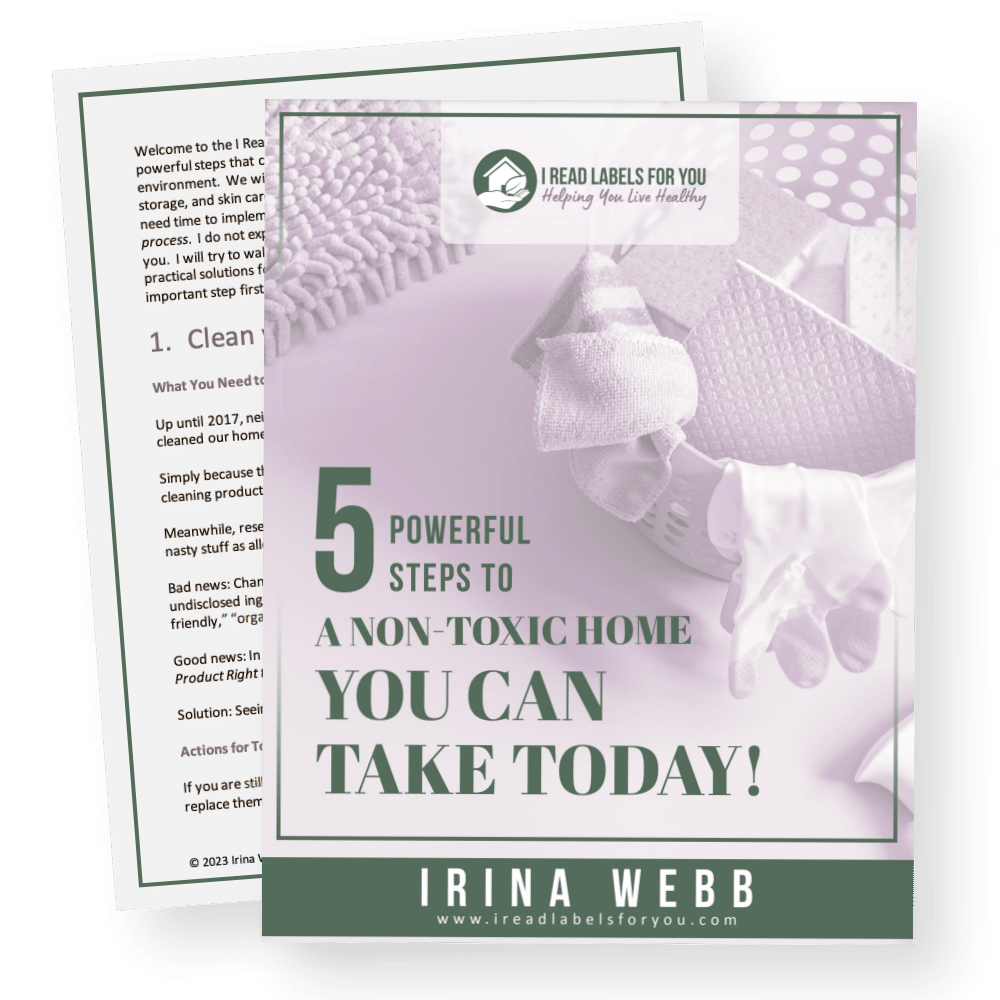Toxic Chemicals in Water List

Did you know that the Safe Drinking Water Act passed in 1974 originally focused mostly on water treatment as the way to provide safe drinking water at the tap? In 1996, however, the law was enhanced by acknowledging that safe drinking water is ensured by protecting water supply sources, training operators, funding drinking water system improvements, and educating the public about drinking water safety standards. In fact, the responsibility for making sure public water systems provide safe drinking water is divided among the US Environmental Protection Agency, states, tribes, local water systems, and the public.
Importantly, drinking water safety is not something we should take for granted due to numerous potential drinking water contaminants that can affect human health. High levels of these contaminants may result from the improper disposal of chemicals, pesticides, animal and human waste as well as waste injected underground, and naturally occurring substances. Drinking water that is not properly treated or disinfected, or that travels through an improperly maintained distribution system, may also pose health risks. In this post, you will learn about potential toxic chemicals in water and what you can do about them.
Toxic Chemicals in Water List
To begin, authorized by the Safe Drinking Water Act, the US Environmental Protection Agency (EPA) sets drinking water standards on the national level. These standards, aka the National Primary Drinking Water Regulations, take into account scientific data as well as available technology and costs. Basically, they establish maximum levels of contaminants in drinking water and ways to remove them. Note that the EPA lists both the maximum contaminant levels (MCLs), and the maximum contaminant level goal (MCLGs). The MCLGs indicate the level of a contaminant below which there is no known or expected risk to human health. In other words, these are non-enforceable public health goals based solely on health impact without considering the costs of contaminant removal.
In addition, the regulations include chemical testing requirements for drinking water systems to meet the safety standards. The US Environmental Protection Agency (EPA) also provides guidance, assistance, and public information about drinking water standards. Plus, it collects public drinking water data and oversees state drinking water programs (source).
The results of a recent USGS study, conducted in Minneapolis, indicate that exposure to high levels of contaminant mixtures is a potential public health concern (source). And the Centers for Disease Control and Prevention (CDC) underscores the importance of knowing where your drinking water comes from, how it’s been treated, and if it’s safe to drink (source).
There are several categories of potential contaminants and toxic chemicals in water:
- microorganisms
- disinfectants
- disinfection byproducts
- inorganic chemicals
- organic chemicals, and
- radionuclides (source).
Let’s talk about each of them.

Microorganisms
Some microorganisms that may contaminate your water, especially well water and spring water, include:
- heterotrophic bacteria
- mycobacteria
- protozoa
- algae
- mold
- fungus
- coliform
- E. coli
- H. pylori
- salmonella
- legionella
- giardia
- crypto, and others.
If you have noticed a musty, moldy, or mildew-like smell or taste in your water or microbial growth/biofilm buildup on your fixtures, it may indicate inadequate water treatment or a problem with the local water distribution system. Also, the following symptoms may tell you that your water is not safe to drink:
- diarrhea
- vomiting
- cramps
- nausea
- headache, and
- pneumonia (source).
In order to be sure of what’s in your tap water, the best practice is to test it at a certified testing lab, like My Tap Score. Actually, My Tap Score carries specialized water testing kits for microorganisms in water (email me for a 10% discount code). Learn more about this in my blog post How To Test Your Water Quality At Home.
Disinfectants
The three disinfectants commonly used by water treatment plants as water additives to control microbes are:
- chlorine
- chloramines, and
- chlorine dioxide.
If the level of these toxic chemicals in water is above the maximum contaminant level (MCL), potential health effects may include:
- eye/nose irritation
- stomach discomfort
- anemia, and
- nervous system disturbances in infants and young children (source).

Test your water quality at home!
My Tap Score
Test the quality of any type of water easily! Email us for a 10% discount code.
Disinfection Byproducts
Next, some unwanted disinfection byproducts that may be in your water include:
- bromate
- chlorite
- haloacetic acids, and
- trihalomethanes.
As for chlorite, long-term exposure to levels above the maximum contaminant level goal may cause anemia and disturbances in the nervous system of infants and young children. But long-term exposure to bromate and haloacetic acids increases the risk of cancer. In addition to the risk of cancer, long-term exposure to trihalomethanes causes kidney, liver or central nervous system problems (source).
In my blog post Water Treatment Chemicals List, I mention that due to their potential side effects, disinfection byproducts are even of bigger concern than the disinfectants themselves. Personally, I use a water filter to ensure my drinking water safety. If you are looking for one, read my blog post about top water filters to get a general idea about water filtration systems. Conversely, you could turn to the professionals at Clean Water Revival to save your time and money (more information and discount code here).
Inorganic Chemicals
This group of toxic chemicals in water includes metals, minerals, and fertilizers (like nitrite and nitrate):
- arsenic
- lead
- copper
- fluoride
- cadmium
- iron
- uranium
- nickel, and others.
The long-term exposure to levels above maximum contaminant level goals of any of these chemicals is harmful to humans, especially to those with compromised immune systems. For instance, exposure to arsenic may cause skin damage, problems with circulatory systems, and even an increase in the risk of cancer. Exposure to levels above the maximum contaminant level goal of cadmium may cause kidney damage. And exposure to lead causes delays in physical or mental development in infants and children and kidney problems and high blood pressure in adults (source).
Again, the My Tap Score water testing lab offers specialized water testing kits targeted at finding out the levels of metals and minerals in your water (email me for a 10% discount code). Learn more about How To Test Your Water Quality At Home.

Organic Chemicals
This group consists of volatile and semi-volatile organic compounds (VOC/SVOC), perfluoroalkyl substances (PFAS, PFOS, PFOA, GENX), and herbicides. The toxic chemicals in water list includes:
- glyphosate
- flame-retardants
- dioxin
- haloacetic acids
- benzene
- toluene
- acrylamide
- ethylene glycol, and others.
For instance, prolonged exposure to acrylamide may lead to nervous system and blood problems as well as an increased risk of cancer. Exposure to dioxin may cause reproductive difficulties and an increased risk of cancer. And glyphosate exposure may trigger kidney problems and reproductive difficulties (source).
As for PFAS in drinking water, they are especially dangerous because once they enter the body, they accumulate and cause serious toxic effects. To identify PFAS in drinking water, turn to My Tap Score for a specialized water testing kit (email me for a 10% discount code).
Radionuclides
These toxic chemicals in water include:
- alpha particles
- beta particles
- radium, and
- uranium.
The side effects of prolonged exposure to levels above maximum contaminant level goals for all of them involve an increased risk if cancer. In the case of uranium, the side effects also include kidney toxicity (source).
As a matter of fact, I’ve had to deal with uranium in my drinking water. With the help of an advanced city water testing kit by My Tap Score, I discovered that its levels were far above the maximum contaminant level goal (MCLG) (email me for a 10% discount code). If you have the same problem, learn what you can do about uranium in water from my experience.
Summary Of The Toxic Chemicals In Water List
For Various Reasons, Your Drinking Water May Contain Toxic Chemicals And May Not Be Safe To Drink. It Is A Good Idea To Install A Water Filter At Your Home.
To sum up, the Safe Drinking Water Act authorized the US Environmental Protection Agency (EPA) to set national standards for public drinking water. Hence, the EPA has established the National Primary Drinking Water Regulations specifying maximum contaminant levels as well as maximum contaminant level goals for certain impurities, but not all of them. If you look at this Environmental Working Group Tap Water Database, you’ll see that the toxic chemicals in water list is quite long. The major groups of drinking water contaminants include:
- microorganisms
- disinfectants
- disinfection byproducts
- inorganic chemicals
- organic chemicals, and
- radionuclides (source).
I believe that using a water filtration system for your tap water is crucial for your safety. Personally, I use a Pure Effect water filter, but you can, first, read my blog post on top water filters to learn more about the water filter industry. Second, you can turn to Clean Water Revival for professional assistance in finding a water filter that will work for the contaminants in your water (more information and discount code here). Also, consider using My Tap Score home water testing kits for testing your water quality at home (email me for a 10% discount code).
Browse the I Read Labels For You blog for fun information on healthy living and various types of water. Also, remember to check out our non-toxic product shop, e-books, and services.

Download The Free Guide!
5 Powerful Steps To A Non-Toxic Home
Join our informed consumer community and get our free guide the “5 Powerful Steps To A Non-Toxic Home”.

 Written by
Written by 





what would you suggest to be the best option for water filtration if we are renting an apartment, and are not able to install water purification systems in the plumbing?
Hi Angelina! Thank you for reaching out to I Read Labels For You! Please check out this product: https://ireadlabelsforyou.com/product/aquatru-water-purifier/